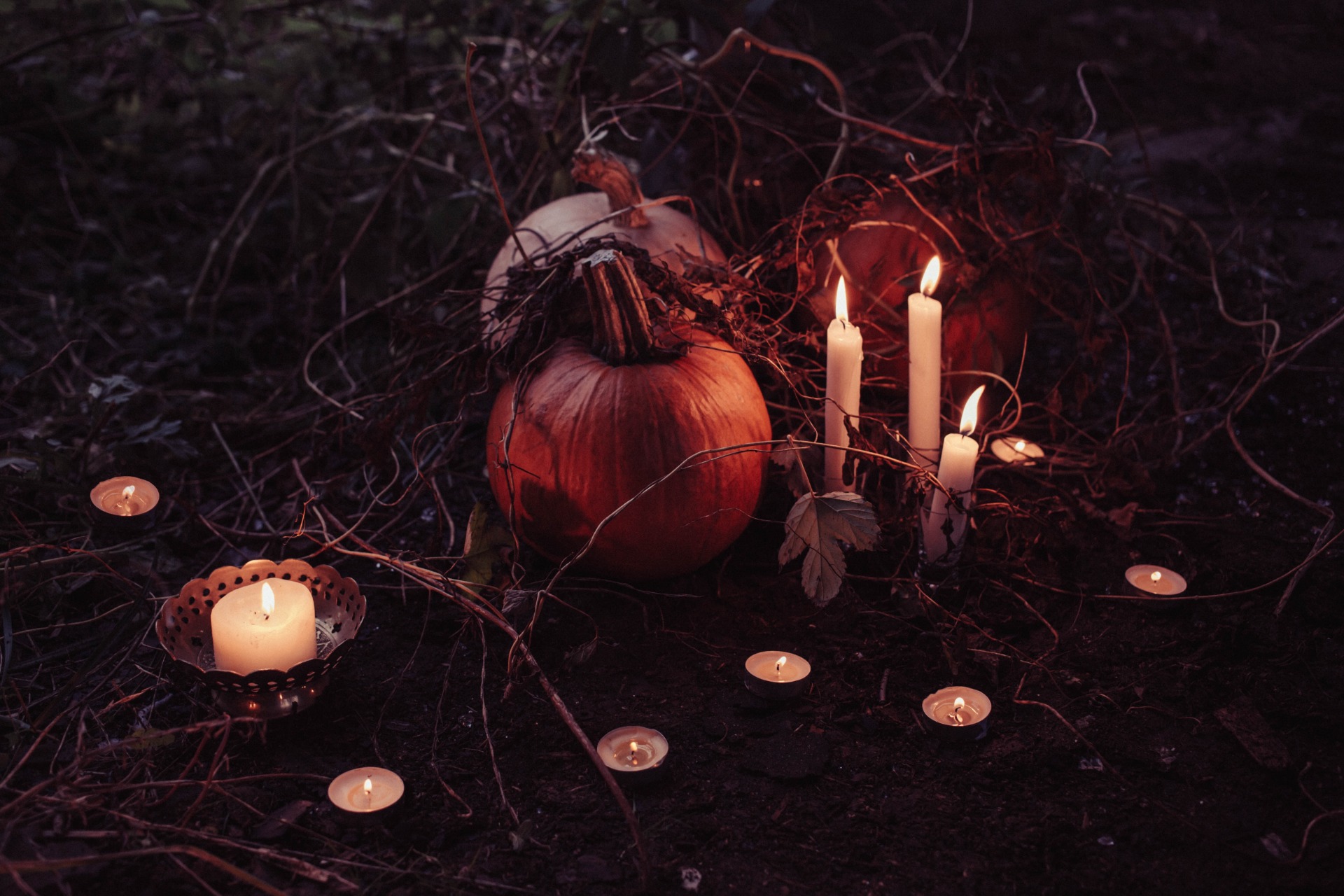Style • 10/25/2023
What is Samhain? The Origins of Halloween

Revivalist is a reader-supported endeavor and our posts may contain affiliate links. When you buy through links on our site, we may earn an affiliate commission.
As the autumn leaves start to fall, a familiar atmosphere emerges. People bring out their costumes and start carving pumpkins with their families in anticipation of Halloween.
Halloween is a beloved holiday celebrated around the world, but it has deep roots that extend back centuries. At the heart of this holiday is the ancient Celtic festival called Samhain.
Here’s all you need to know about this ancient festival.
What is Samhain?
Samhain (pronounced sah-win) is an ancient Celtic fire festival. For the ancient Celts, four yearly festivals mark different seasons and farming periods. These four festivals are Imbolc, Beltane, Lughnasadh, and Samhain. The Celts considered Samhain to be the most significant of the four.
The Celts divided their year into two. There’s a light half and a dark half. Samhain marks the beginning of the dark half of the year and also celebrates the year’s harvest.
For the ancient Celts, the beginning of the day is at dusk. Thus, they believe that time begins in darkness. This belief also applies to their year, so Celts consider Samhain the end of the Celtic calendar, ushering in a new year as the dark half of the year begins.
How is Samhain Celebrated?
Samhain is celebrated on October 31st, with the festivities usually lasting three days. According to 17th-century Irish historian Geoffrey Keating, Samhain starts by extinguishing all existing fires. Then, druids, or ancient Celtic priests, would light a new fire to start the festival.
To appease the gods and ward off spirits, ancient Celts would sacrifice various crops and animals. Then, they would throw the bones of the sacrificed animals into the fire, creating a “bone fire.” Yes, that is the origin of the word bonfire!
People would then use the communal fire to light their torches and relight the fires in their homes.
Historians also believe that the Celts would disguise themselves to keep spirits away. They would use ash from the fire to darken their faces. They also wore masks and put on various costumes to ward off any evil entities.
Some historians also believe Celts would carve terrifying faces on harvest crops like beets, potatoes and turnips. Some believe this practice eventually evolved into the Jack-O-Lanterns recognized worldwide today.
There might have been other traditions done during Samhain. However, many of them have been lost to history.
The Origins of Halloween
Ancient Celts associated the transition from summer to winter with death and rebirth. They believed that the veil between the living and spirit worlds was thinnest during this time, allowing the living to see the dead and otherworldly beings from beyond this realm.
Many traditions tied to Samhain involve warding off spirits and keeping people safe from the dangers of the spirit world. Bonfires, sacrifices, costumes and more all aimed to ward off spirits roaming the earth when the veil between worlds is thinnest.
By the time Christianity reached Ireland, the Catholic Church had set important dates to coincide with pagan traditions. The Church did this to evangelize the Celts more efficiently. The Celts were unwilling to let go of Samhain and their other traditions, so the Church moved their important dates to coincide and eventually take over pagan celebrations. The pagan aspects of these holidays still remained, though. That’s the reason why Christmas trees are a holiday staple even though they have nothing to do with the birth of Jesus.
The Church designated November 1 as All Saints Day. As the date coincided with Samhain, the holiday also slowly absorbed the pagan customs associated with the festival. With time, the day before All Saints Day called “All Hallows Eve” evolved into Halloween.
During the 19th century, many Irish relocated to America due to the famine. They brought with them traditions that eventually became part of modern Halloween.
Samhain in Modern Times
In modern times, most people celebrate Samhain in the form of Halloween. However, for those who practice modern Wiccan or Pagan traditions, Samhain is still alive.
Modern-day witches usually celebrate Samhain with their own rituals. Some keep the spirit of the original festival alive by creating altars, holding ceremonies and doing other related activities. Samhain altars usually contain various harvest fruits, pictures of dead loved ones, candles, incense and more.
Some Wiccans will also hold their own version of a fire ritual. Instead of burning bones of animal sacrifices, they might burn paper with their feelings or messages to their ancestors written on it.
Modern-day Samhain celebrations focus on gratitude, particularly towards ancestors. Some would hold a dumb supper, which means they would invite the spirits of their ancestors to join them for a meal. On one hand, some prefer to stay quiet during dumb supper, while some communicate with their ancestors by sharing recent news.
Some Wiccans would create space to reach out to their ancestors. They would sit and imagine crossing between the veil to talk to their loved ones. Some will visit their loved ones at the cemetery and perform this ritual.
Modern-day Samhain traditions are varied. Since there is no singular doctrine for Wiccans, believers can create their own Samhain practices.
Keeping Traditions Old and New
As you carve your pumpkin for this year’s Halloween, think about the roots of your beloved holiday. Since the time the ancient Celts celebrated Samhain, the world has changed beyond recognition. However, traditions lived on and evolved, making their way into our lives.
Whether you celebrate Halloween or a modern version of Samhain, remember the power of traditions and the human desire to celebrate.
Subscribe to Our Weekly Newsletter
We would love to connect deeper with you!


